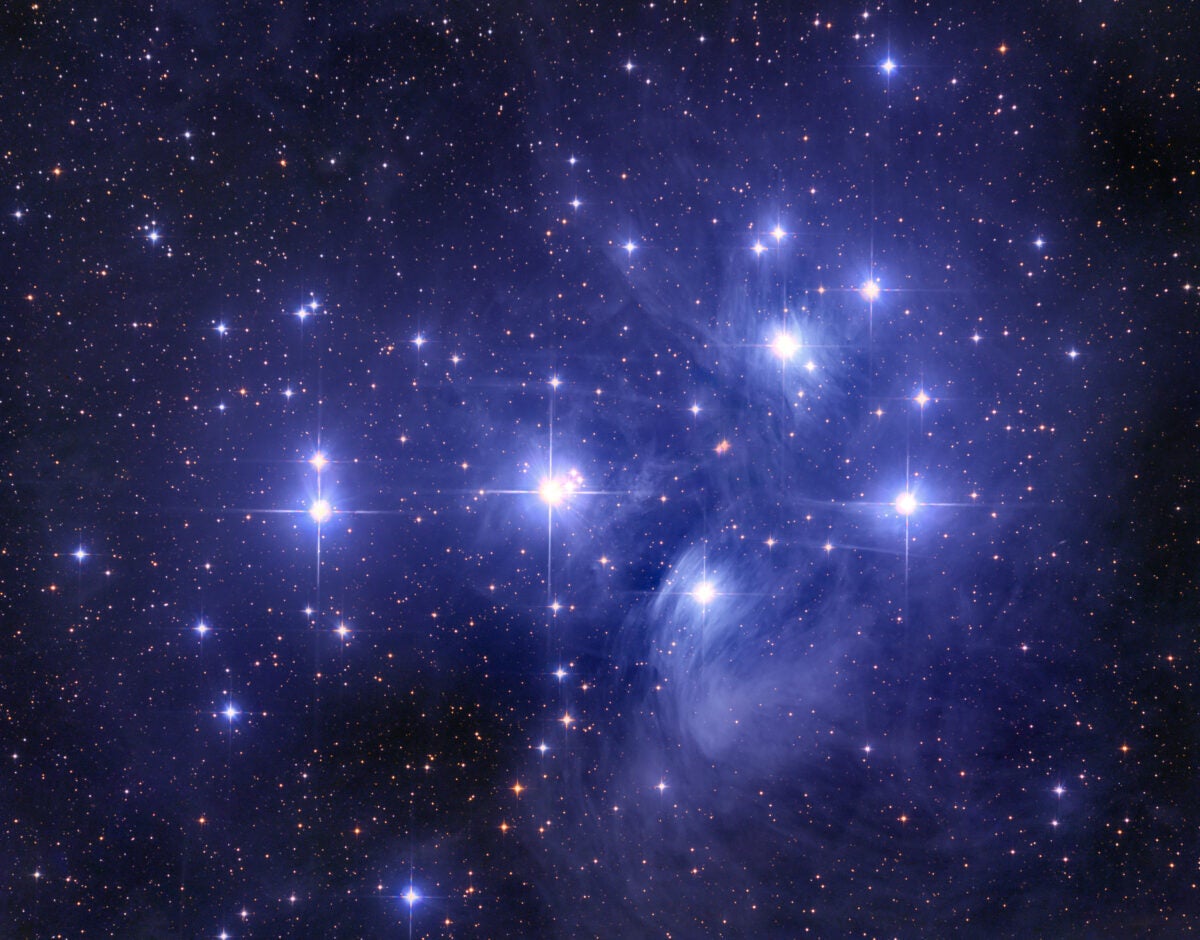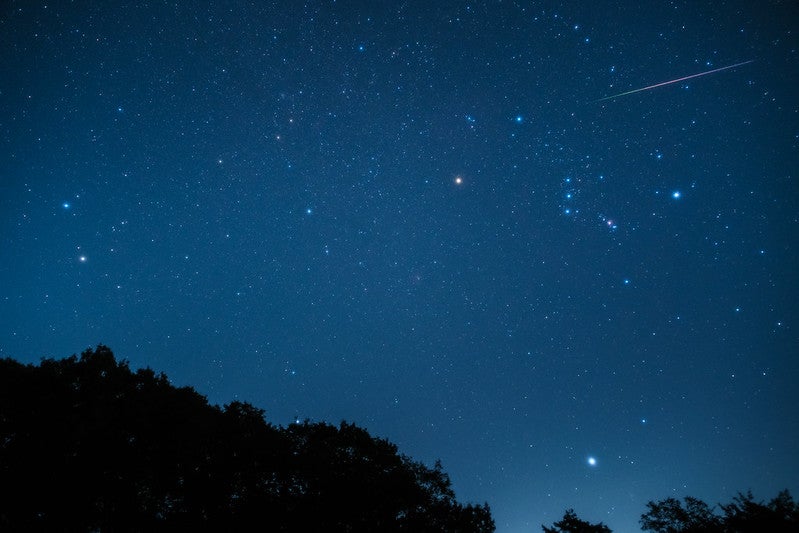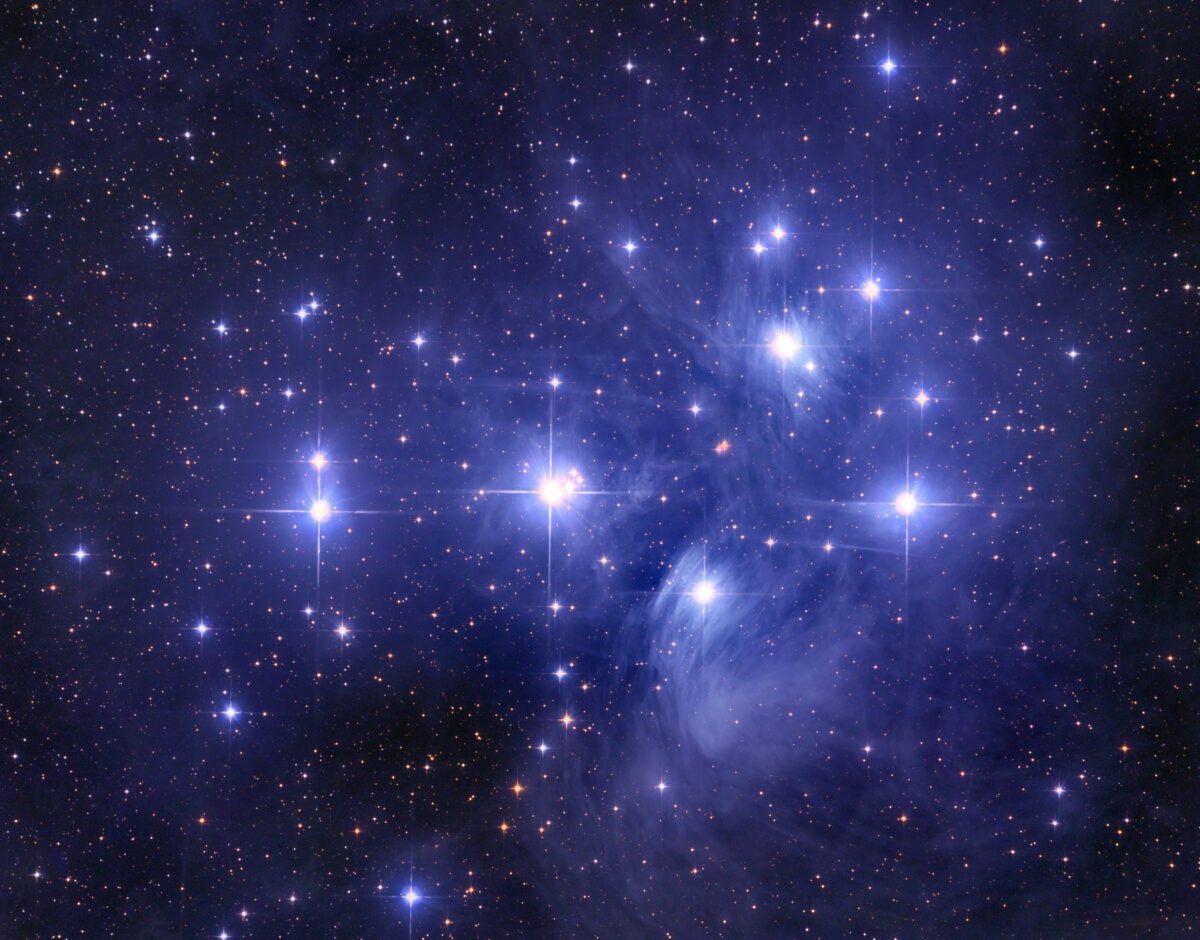
This shot of the Pleiades (M45) — which comprises two hours of integration time taken with a 10-inch scope, Atik 16200 CCD, and Starizona’s Nexus 0.75x Newtonian Focal Reducer/Coma Corrector — displays sharp details out to the edges. All photos by Chris Schur.
Affordable fast Newtonian astrographs are game changers for astrophotographers. Most of these instruments have a focal ratio in the vicinity of f/4, allowing them to capture light from deep-sky objects more than six times faster than the f/10 Schmidt-Cassegrain telescopes that dominate the market.
But with that faster speed comes a huge problem: a curved focal plane and severe coma, making images taken with such instruments sharp in the center and blurry around the edges. To combat this, manufacturers offer various Newtonian coma correctors, designed to alleviate (to varying degrees) this optical defect and allow users to fill the full frame of their CCD or CMOS cameras with sharp stars. However, the effectiveness of this correction varies among designs, with some performing much better than others.
Here, I evaluate a new type of coma corrector: the Starizona Nexus 0.75x Newtonian Focal Reducer/Coma Corrector. As implied by the name, rather than slowing the telescope — as typical coma correctors do — the Nexus addresses coma while also reducing the focal ratio for an even faster scope.
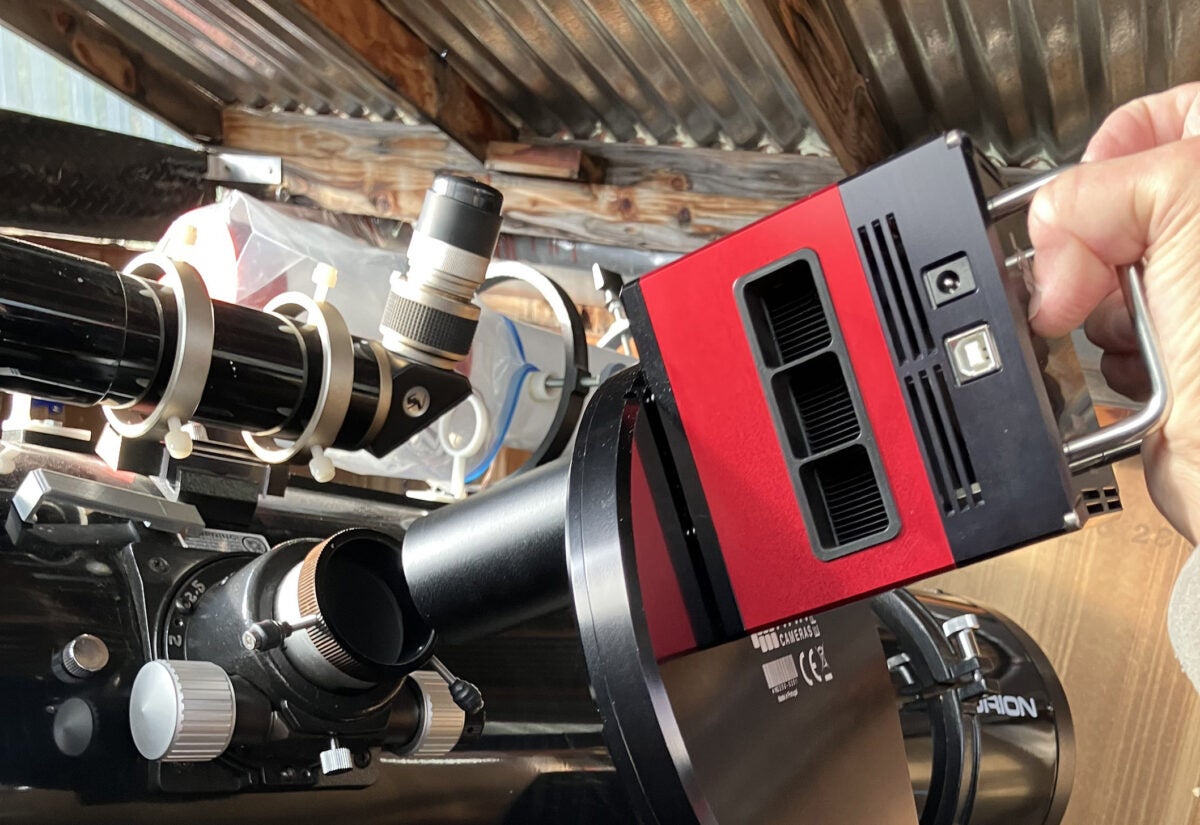
Correcting coma
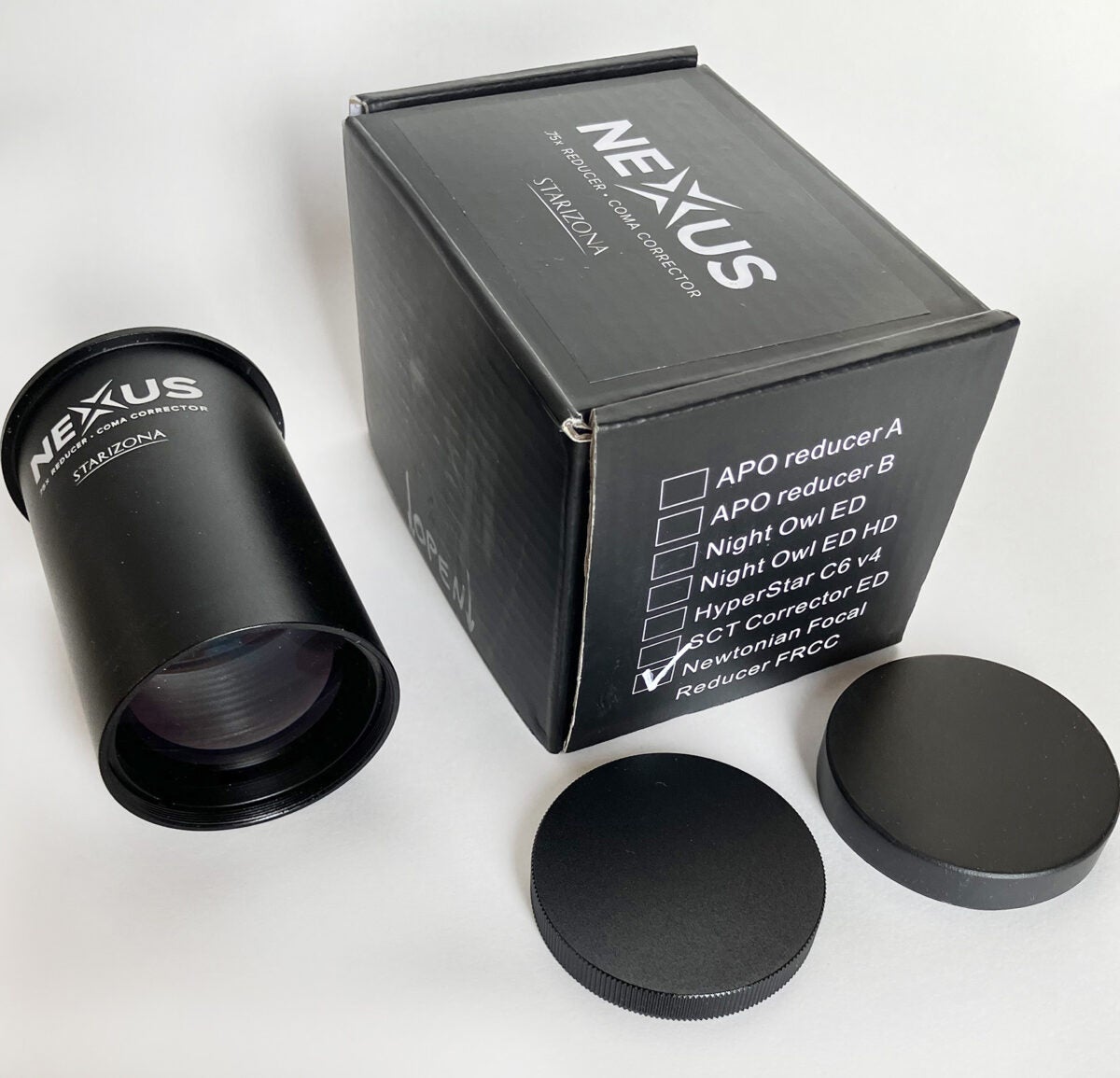
Without correction, fast parabolic mirrors produce images that are sharp only in the center and degrade rapidly as you move off-axis. This isn’t due to a bad or defective mirror, but is inherent in the Newtonian optical design. The faster the mirror, the more quickly the image degrades. For an f/4 or f/5 mirror, this equates to sharp stars only in the central half of the field for a full-frame sensor, or about three-quarters of the frame for a common APS-C-sized chip.
Inserting a complex lens system (a coma corrector) just before the focal point — typically 2.2 inches (55 millimeters) in front of the sensor — can flatten out and turn those bird-shaped stars in the corners into sharp, round points again.
Over the past decade, two designs have dominated the market for this purpose. The first was Tele Vue Optics’ Paracorr, followed more recently by the Baader Planetarium Multi-Purpose Coma Corrector (MPCC). In my experience with several f/3.6 to f/4 Newtonian astrographs, each of these works reasonably well; however, there are drawbacks to each design. While these correctors create mostly sharp fields, both still show a tiny amount of residual coma in the corners of frames. Additionally, both the Paracorr and the first version of the Baader MPCC magnify the image in the process of flattening it, increasing the focal length and f-number, thereby slowing the scope.
The newer Baader MPCC Mark II and Mark III have 1x magnification, so as to not change the field of view or focal ratio of your telescope. This is a big advantage, as a faster speed is better for dim, diffuse deep-sky nebulae and galaxies. And although the Paracorr’s small 1.2x magnification is insignificant compared to other limiting factors, such as skyglow or the variable quality of the night sky, the idea of putting in the optical path anything that slows down the telescope’s speed can be a bit unnerving.
But now, we have a third choice for coma correction, one that was unavailable only a few years ago: the Nexus from Starizona. Not only does this corrector produce pinpoint stars all the way to the corners with an f/4 telescope, its 0.75x reduction actually increases your field by 25 percent and makes your scope nearly two times faster, turning it into an f/3! The speed increase and larger field alone were enough to convince me that this is a superior product. And after you’ve seen the incredible stars this corrector produces, you, too, will be convinced.
I spent the better part of a year evaluating this product with a variety of instruments under many different sky conditions, from suburban Bortle 6 to world-class Bortle 1 dark skies. The product performed beyond all expectations and is now a permanent resident in my astroimaging toolbox.
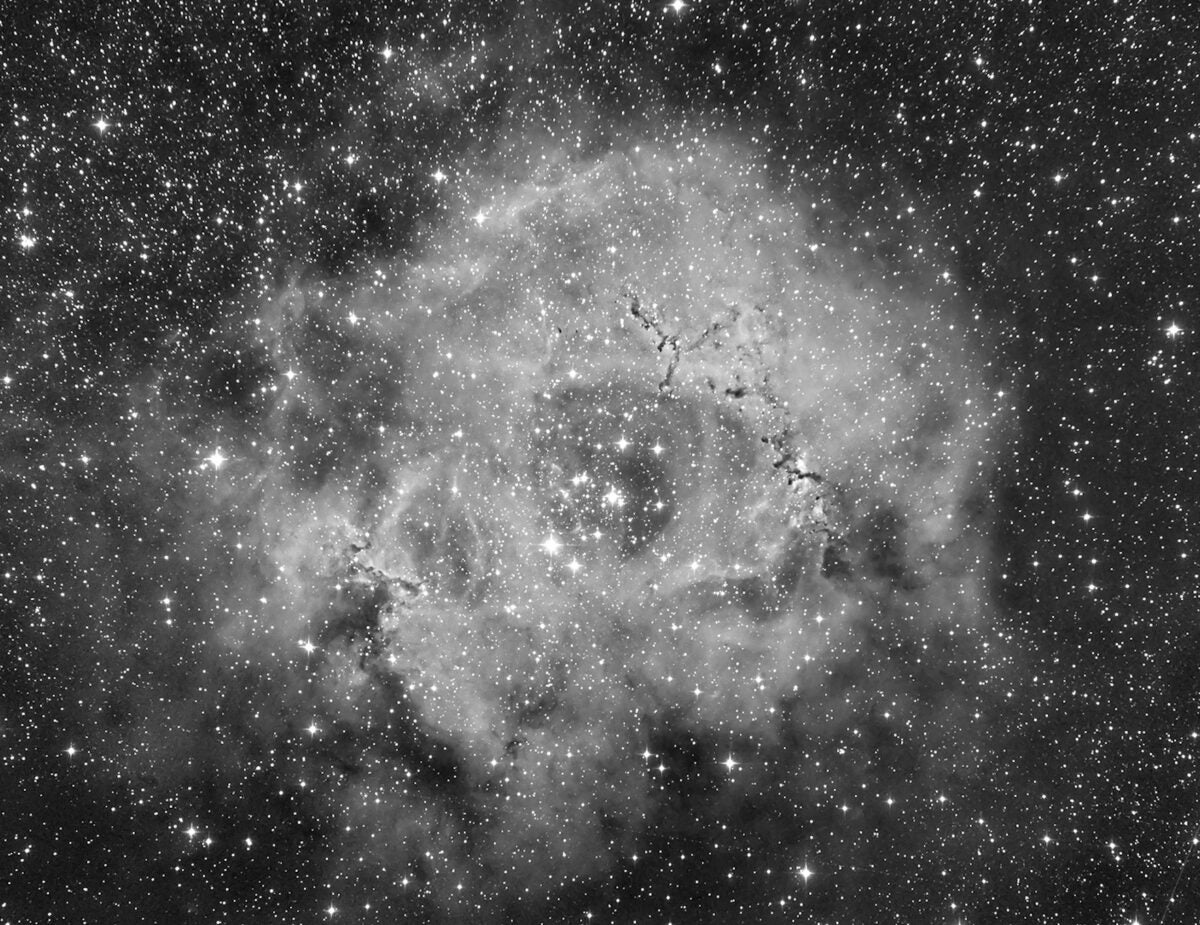
Field testing
The quality of the machining and fit and finish of the Nexus are impressive. Even the black box the Nexus comes in is lined with form-fitted foam and gives the impression of a high-quality product. Starizona provides a metal screw-on cap for the 48mm threaded camera end of the Nexus and a black ABS plastic cover for the lens end.
The barrel of the Nexus is quite long compared to competing products. This becomes apparent when inserting the camera and corrector assembly into the drawtube of the telescope. What I found surprising is that even with the corrector installed, the focal point on the drawtube is essentially the same. This is an impressive feat of optical engineering.
I tested the Nexus coma corrector with two different Newtonian astrographs: a GSO 8-inch f/3.9 and a 10-inch f/3.9. Both are permanently mounted in roll-off roof observatories under moderately dark to pitch-black sky conditions. I also tested the Nexus with two different cameras: a ZWO ASI071MC Pro APS-C color CMOS (26mm diagonal) and an Atik 16200 monochrome camera with a larger APS-H sensor (35mm diagonal). I used standard off-the-shelf spacers from ZWO to get the required 55mm backspacing with the ASI071MC Pro, while the Atik 16200 and integrated filter wheel required a custom spacer from www.preciseparts.com. The resulting focal ratio of the Nexus with these two instruments became a blistering f/2.9.
With both cameras, the first test images that came up on the computer screen were somewhat of a shock. Stars in the corners were every bit as sharp as in the center of the frame. I had never seen such perfection in my images. Further surprising me, the Atik monochrome camera was able to capture sharp stars right to the corners, even with the large-format chip. This means Starizona’s claim of 28mm coverage for correction is definitely on the conservative end.
My final test was to see whether all colors in the filter wheel in the monochrome camera would come to the same focus. While using both the Paracorr and MPCC, it had become habit to refocus whenever switching RGB filters, mainly because the blue filter focus was so different from the red and green. This is not the case with the Nexus! All three filters were so close to focus that I didn’t touch the focus knob at all once the shot was focused for white light.
The speed increase was immediately noticeable on the first images as well. Even a five-minute subframe showed incredible detail and faint nebulosity never visible with competing correctors in such a short exposure. The larger field of view was very similar to what I get with my Stellarvue SV80 refractor with its coma corrector, yet with much sharper stars, higher overall resolution, and absolutely no chromatic aberrations. There was some noticeable light falloff in the extreme corners; however, using a flat from an LED panel took care of that without any problems. Taking the normal one- to two-hour sets resulted in some of the most breathtaking deep-sky images I had ever produced. My mind was made up: This would be my primary imaging setup for the immediate future!
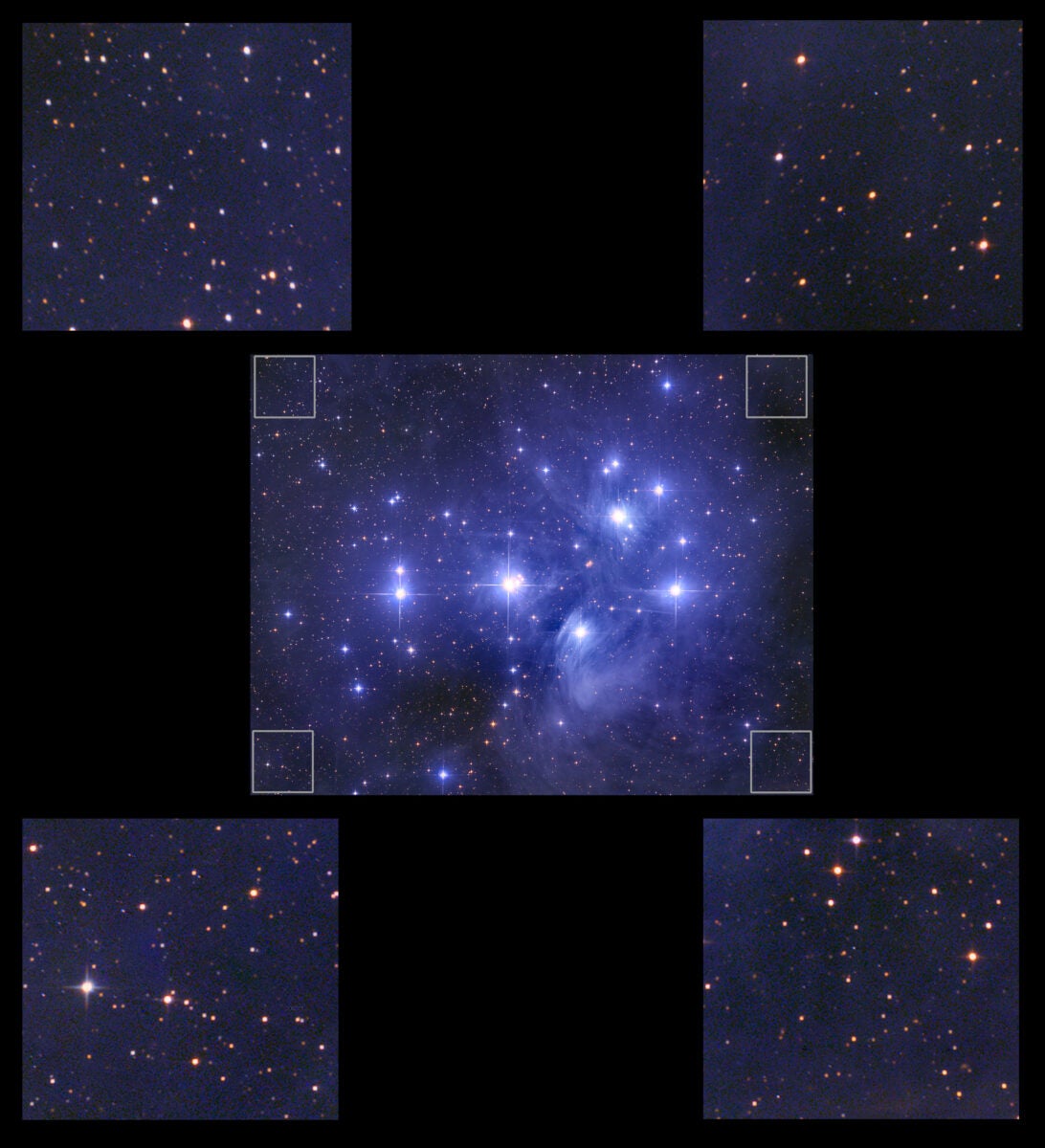
Superb performance
The Nexus 0.75x Newtonian Focal Reducer/Coma Corrector is a well-built and superbly corrected lens. Testing with f/3.6 to f/4 Newtonian astrographs indicates superior performance and speed compared with similar products that have been on the market longer.
If you’re currently using a fast Newtonian for your astroimaging, consider adding this product to your optical arsenal. Although it is a bit costly compared to some competing products, it will make achieving world-class results with your imaging setup routine.
